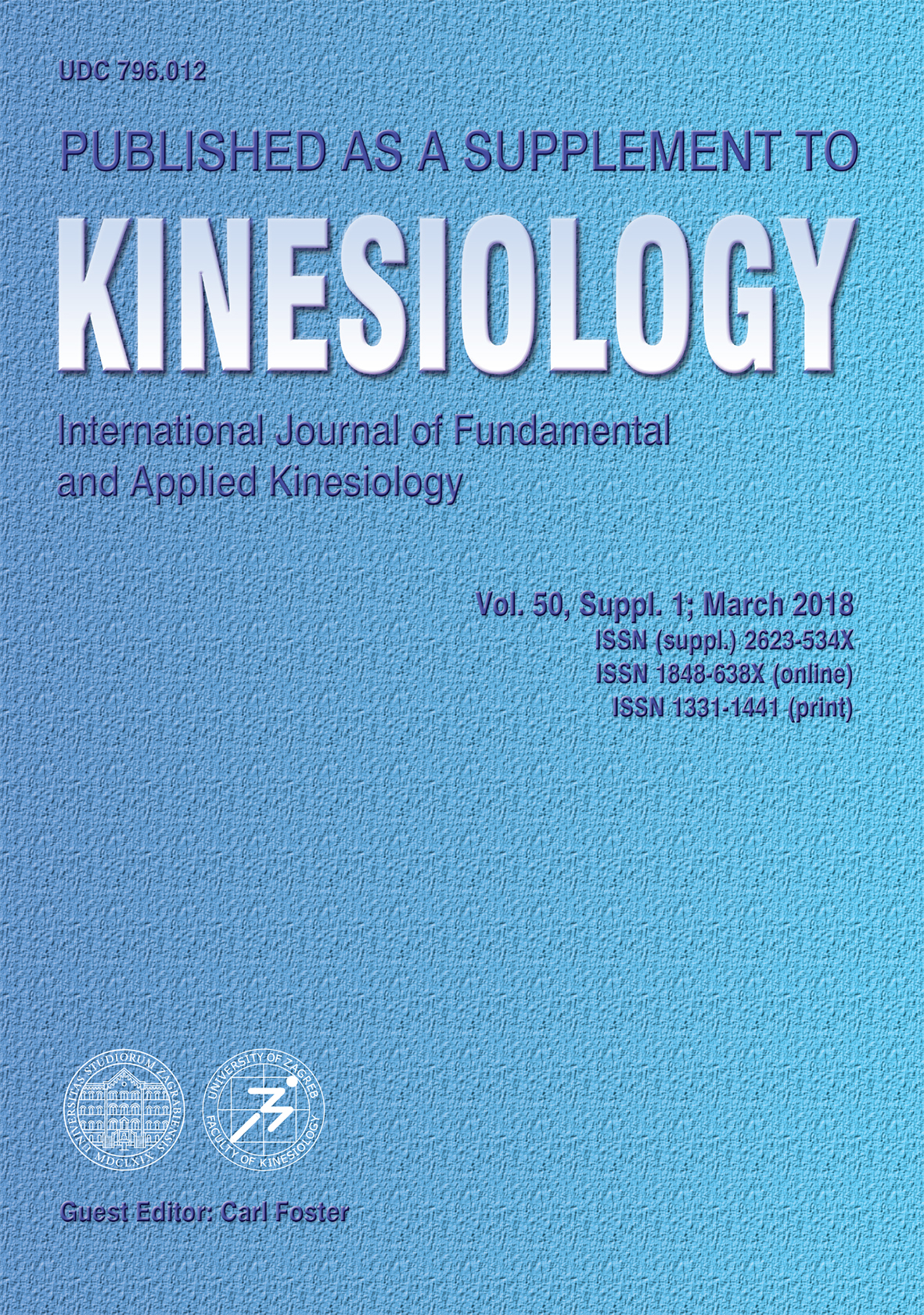THE INFLUENCE OF TRAINING BACKGROUND ON DIFFERENT RATE OF FORCE DEVELOPMENT CALCULATIONS DURING COUNTERMOVEMENT JUMP
Abstract
The aim of this study was to look at differences in countermovement jump (CMJ) performance and selected kinetic parameters in athletes of different training backgrounds and to examine the relationships between these parameters. The subjects were 14 endurance athletes, 12 sprinters, and 13 fire-fighter aspirants (controls); each performed two CMJ on a force plate. The best jump of two attempts was selected and the following parameters were calculated: CMJ height (h), peak power (PP), normalized vertical stiffness (Kvert), rate of force development (RFD), peak RFD (pRFD) during concentric phase, and the ratio between pRFD and the time of its occurrence (iRFD). Sprinters exhibited greater h, PP, Kvert and RFD values than the other groups. A strong correlation was revealed between PP and h, and between pRFD and Kvert in all groups. The magnitude of correlations improved with iRFD when compared to pRFD (.5-.6 vs. .7-.9). There were strong correlations (r>.7) between PP, Kvert, and both pRFD and iRFD only for the endurance athletes group. From these results, it would be recommended to record different RFD calculations during CMJ evaluations, including the new RFD index (iRFD), in athletes of different training backgrounds.
Key words: explosiveness, stretch-shortening cycle, impulse
Downloads
How to Cite
Issue
Section
License
Copyright (c) 2018 Kinesiology

This work is licensed under a Creative Commons Attribution-NonCommercial 4.0 International License.
At Faculty of Kinesiology we recognize that access to quality research is vital to the scientific community and beyond. Kinesiology is non-profit journal and all costs of publishing and peer review process are covered by the publisher itself or other funding sources like Ministry of Science and Education of the Republic of Croatia. Full text papers are also available free of charge at http://hrcak.srce.hr/kineziologija. There are no restrictions on self archiving of any form of paper (preprint, postprint and publisher's version).
Articles are distributed under the terms of the CC BY - NC 4.0
Kinesiology does not charge any fees to authors to submit or publish articles in our journal.


